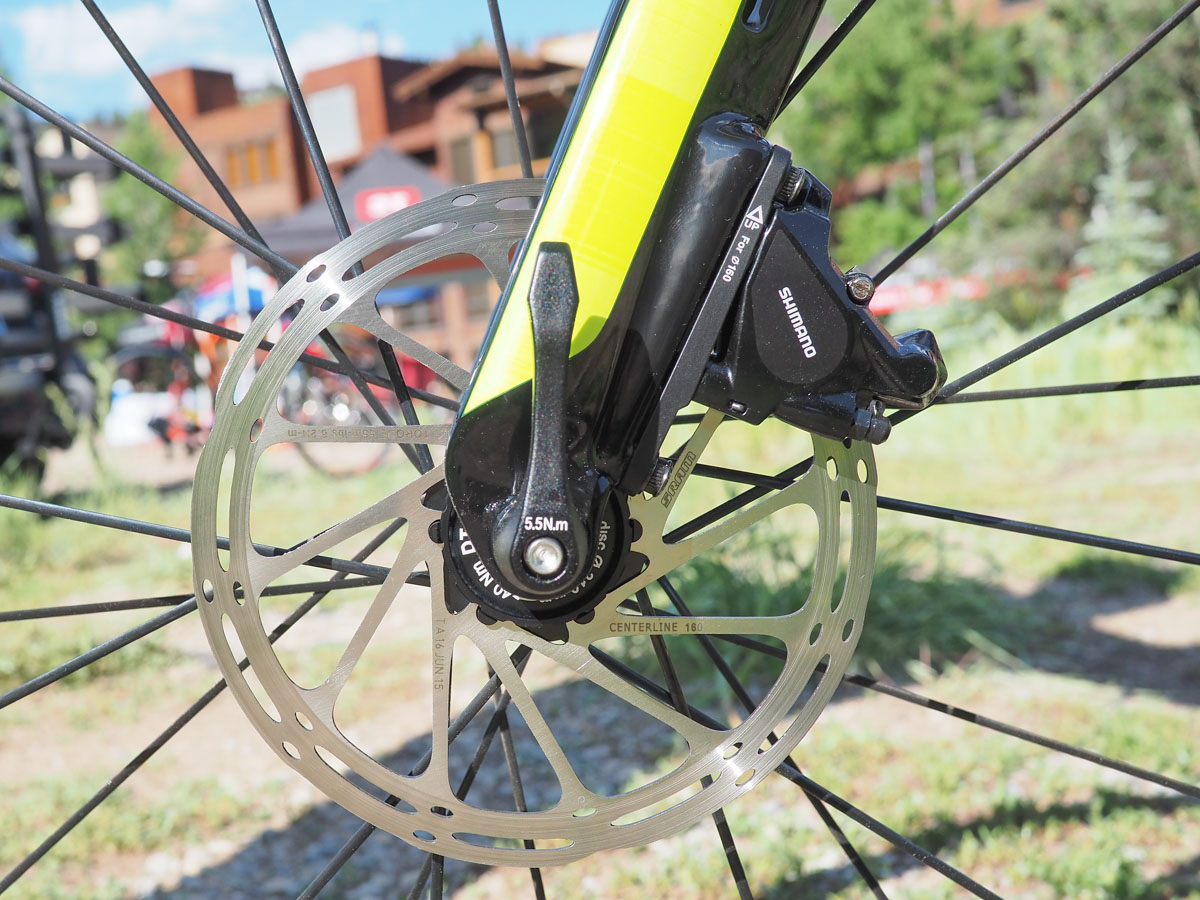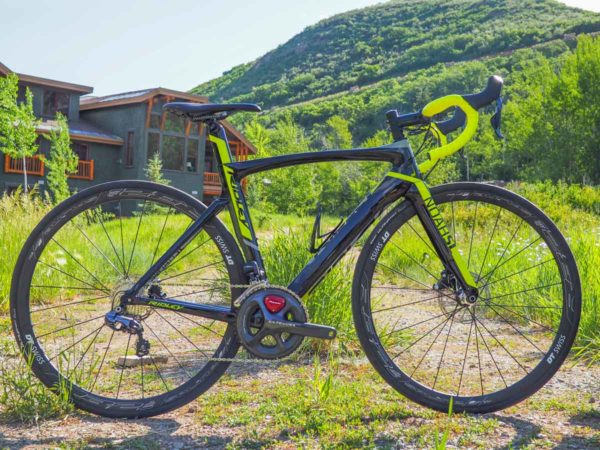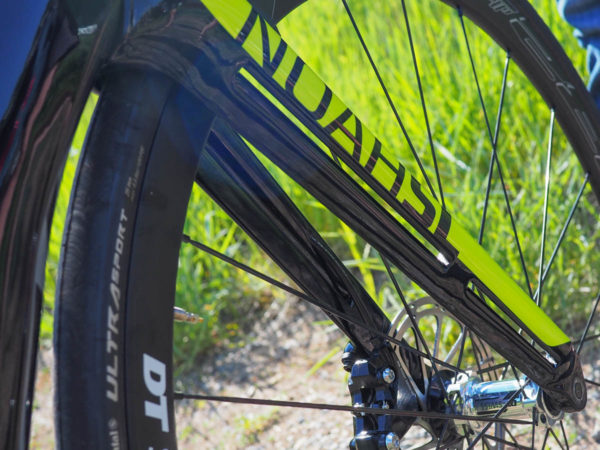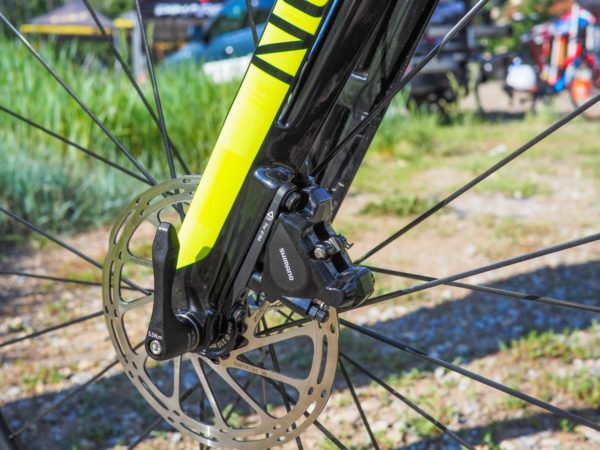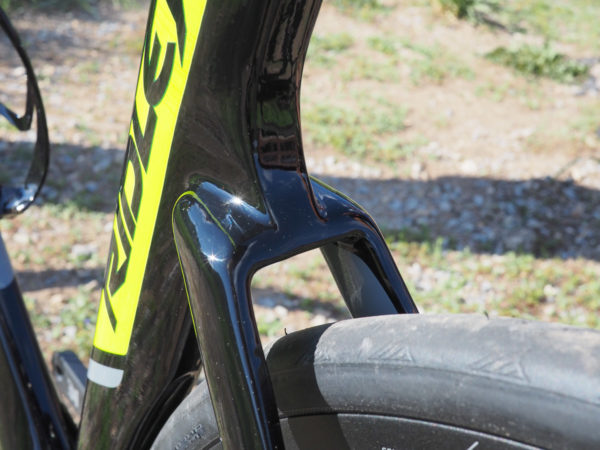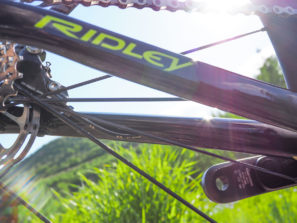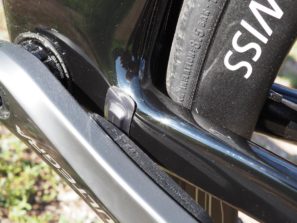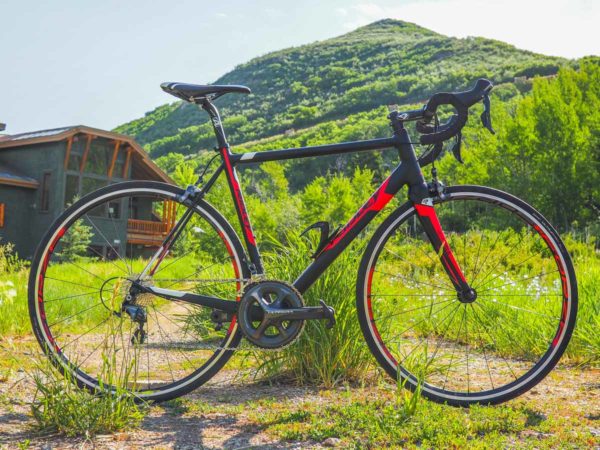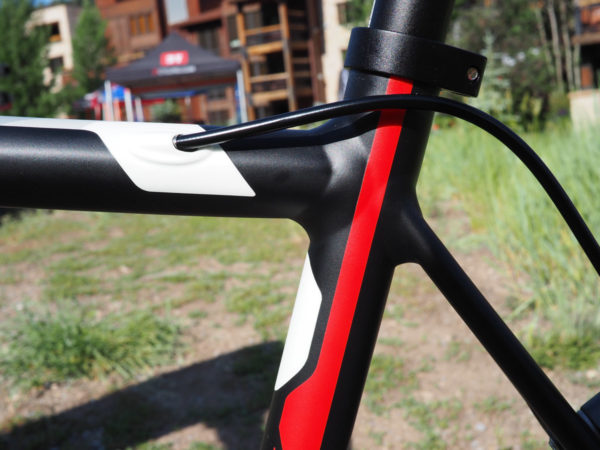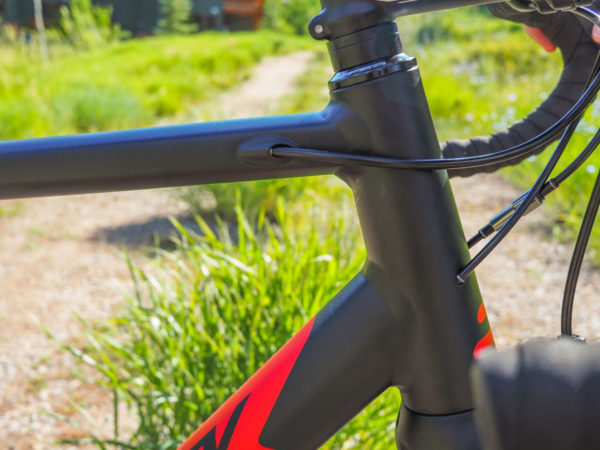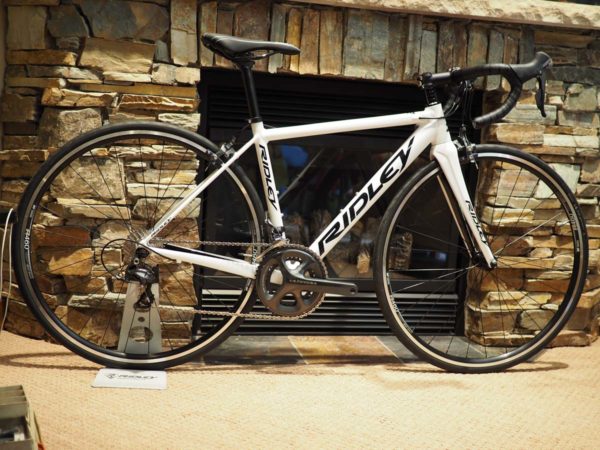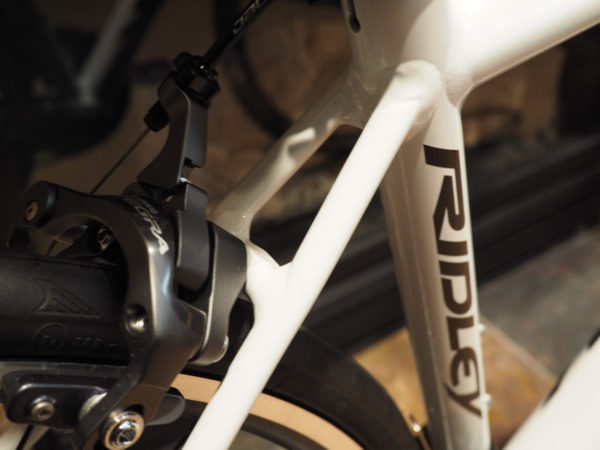Ridley’s decision to move their flagship aero road bike to disc brakes is driven partially by the extreme wet and muddy conditions of the Belgian terrain, but mostly by the philosophy that braking faster allows riders to go faster. Afterall, F1 race teams spend fortunes shaving down their stopping distances, notes Ridley Vice President of International Relations, Richard Wittenberg. As an indicator that the brand is committed to disc, they have re-interpreted their Noah SL to accommodate a flat mount brake system while staying true to the pure race roots of the aero machine.
While the brand may be looking to discs as the future of speed, Ridley has been cooking up several smart gateway products for racers just getting their start, and was able to give us a sneak peak into what we might see this Eurobike…
Ridley designers took pains to maintain the aerodynamic DNA of the Noah SL. Ridley claims that in preliminary testing, the frameset has maintained the general aerodynamic efficiency of the original model and that there are indications that the performance of the new design might actually be improved at some yaw angles. Official windtunnel data still to come.
The F-Split fork has managed to keep the drive side in-tact, with the non-drive lower leg has been filled in to accommodate the forces and flat mount interface of the brake. 12mm thru axles have been added front and rear to increase lateral stiffness of the overall bike… and because thru-axles are quickly becoming the norm in the pro peloton. Complete bikes will be spec’d with 160mm front and 140mm rear rotors, making both frame and fork compatible with either size rotors.
While adapting the front and rear end to accommodate disc brakes has added only 50g to the overall frameset, the complete bike is estimated to gain 300g over its caliper predecessor due to robust wheels and brake hardware. Still, the brand claims that the 15% greater braking power will be worth it to speed fiends.
The bike is UCI certified and will carry that sticker while ridden under Lotto Soudal next season. While it will likely not be raced in the Tour de France, according to Ridley, race fans can anticipate seeing the bike in the 2017 classics, although max tire size is said to be just 25mm with a bit of space around it so probably not the northern classics.
The bike as shown with Ultegra Ui2 build is priced at $5,900 MSRP and will be available Fall 2016.
While the Belgian brand has been hustling to push the limits of speed in its top tier aero offering, it has not forgotten its roots in Aluminum road product. The Helium SLA is a super lightweight alloy race machine with pleasant details that make it an attractive, high-value alternative to entry level carbon product of higher price points.
The tubing is a blend of 6061 and 6066 post-treated aluminum providing stiffness and strength where critical and light weight members were possible. Partial hydro-formed triple-butted tubing and double-pass smooth head and seat tube weld joints allow the Helium SLA to share the profile of the Helium frame and come in under 1,200g.
Internal routing reinforces the high end fit and finish of the frame, with internal routing ports using built in stops for a tucked in build. The fork, shared with the Helium SL, is full carbon -steerer and blades- for extra value.
The overall effect is a sub-18lb complete bike under $1,900 MSRP as shown with an Ultegra build featuring the fit, finish, and aesthetics of a higher tier frame, but with the durability of an alloy frame. A sub-19lb complete $1,500 MSRP version can be expected with a 105 build, with availability slated for September 2016.
Lastly, Ridley shared this small alloy road frame with several journalists at this year’s PressCamp. The bike is small (XXS), alloy, and is not projected to be officially launched until this Eurobike- this is all we were told.
Look for more on this tiny race machine this Fall.
